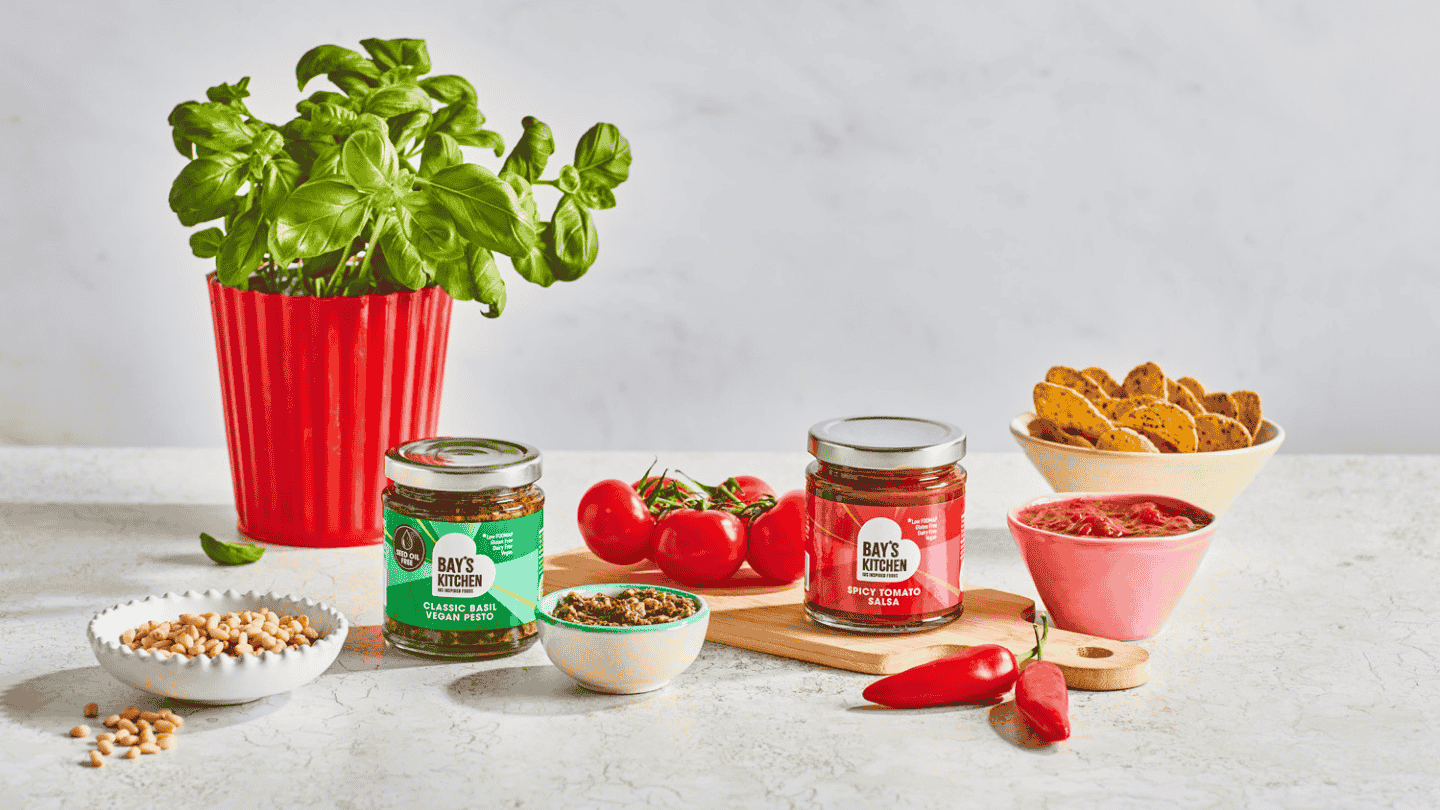Contrary to popular belief, it is possible to embrace the colder months with gusto on the low FODMAP diet. For there is so much joy to be found in the arrival of autumn, when the leaves turn golden underfoot, the days get chillier and settling down in front of the telly on a Saturday night to watch the latest series is a must. Being told to follow the low FODMAP diet shouldn’t put a stop to any of that - so here are some of my favourite foods and ingredients to reach for while you settle into cosy mode.
1. Veggies
The arrival of autumn is prime time for big, leafy low FODMAP greens such as kale and collard greens and hardy root vegetables such as parsnips, swede, celeriac and turnips.
Make soups, stews and pasta dishes (vegetable, chicken and beef stocks by Bay's Kitchen do all of the hard work for you) and transform often overlooked knobbly beige veg into creamy mashes and gratins.
One of my favourite weeknight dinners is a toad in the hole. Use this recipe - Carrot, Aubergine & Rosemary 'Toad in the Hole' - as a base and swap in any low FODMAP veg lurking in the fridge or cupboards. Add lots of fresh herbs and generous pouring of Bay's Kitchen Gravy. Yum.
Potatoes are plentiful and the perfect side for your roast. Mash them with a little butter or par-boil and then roast until fluffy on the inside and perfectly golden on the outside.
Pumpkins aren’t just for Halloween and taste so delicious in anything from a lasagne to a cake - if you’re lucky enough to be able to get hold of a majestic Kabocha or Japanese pumpkin you’re in for a treat as FODMAPs weren’t detected in these green skinned beauties at all! Save any seeds (pumpkin seeds are also low FODMAP at 2 tablespoons), spread into a single layer on a baking tray, drizzle in a little oil and roast until crisp. A deliciously crunchy topper to elevate lots of different meals.
Butternut squash is low FODMAP up to 45g (about ⅓ of a cup). Chop into small chunks, roast and stir through risottos or add to a frying pan and brown, readying it to be used in a simple and comforting curry like Bay's Kitchen Mixed Vegetable Thai Red Curry.
Kohlrabi gets a back seat at this time of year but it is absolutely delicious and low FODMAP in larger amounts. Light green in colour, with a crisp and crunchy interior, it’s wonderful raw in ‘slaws and salads and you can roast it too - something different to go alongside a crispy fillet of fish perhaps.
Leeks are at their best from November and while the bulbs are high FODMAP, the green leaves are low and are perfect for incorporating that rich, oniony flavour.
Veering off quickly to nuts while we talk savoury - chestnuts are low FODMAP and work wonderfully baked into a pie. Can I tempt you with this one? Chicken, Chestnut & Spinach Pie.
Discover more low FODMAP veggies
2. Fruits
Ruby red cranberries are low FODMAP up to 50g. Bake them in a dessert or stir some through stuffing, they’re a delicious way to add a tart and sweet flavour to recipes.
Edging closer to winter, passion fruits (low FODMAP at 46g) and pomegranates (45g) are bright and vibrant and sometimes exactly what you need to combat all the rich food. Drizzle passion fruit puree over fluffy pancakes and squeeze pomegranate seeds over your porridge in the morning for a festive bejewelled breakfast.
Try pineapple (low FODMAP at 140g) in a spicy salsa come January and eat with Sticky Teriyaki Salmon.
Citrus reigns supreme with piles of orange fruits dotted across supermarkets and at your local grocers. FODMAPs weren’t detected in clementines and 1 medium orange is low FODMAP. Great to snack on or to add into a smoothie or to even make marmalade.
Last but not least - around 20g of apple is low FODMAP (that’s about 2 tablespoons of chopped apple). Enjoy in a homemade applesauce or mixed into a cobbler or cake with another lower FODMAP fruit. Sunday lunchtime is calling!
3. Herbs, Spices & Sweeteners
With almost all herbs and spices being low in FODMAPs, make the most of sweet, warming ingredients such as cinnamon, cloves and nutmeg.
Ginger - dried and fresh - adds so much punchy flavour to sweet and savoury recipes, while aromatic herbs such as sage, rosemary and thyme upgrade simple dishes into something more special.
Low FODMAP maple syrup and light and dark brown sugar are great for adding a deep caramel flavour to recipes. Mix maple syrup with a little mustard and drizzle over roasted carrots. A sticky gingerbread cake made with sweet brown sugar is always a winner.
Remember that the low FODMAP diet is only short term. It might be that next autumn you can eat and tolerate double the amount of foods you can eat this autumn, so try and focus on what you can eat that’s delicious and in season, instead of what you can’t. Why not begin some new traditions and learn some new recipes along the way? In the meantime, I hope I’ve inspired you with a place to start.









